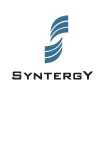AlwaysOn Content Server
for OpenText Content Server
Syntergy’s AlwaysOn Content Server allows you to implement solutions for Disaster Recovery (DR), High Availability (HA) and Continuity of Operations (COOP) for OpenText Content Server. These strategies can be deployed either “On-Premise” or “IaaS” based infrastructures such as OpenText Cloud, Microsoft Azure and Amazon AWS Content Server environments.
Businesses require Service Level Agreements (SLAs) for Content Servers that require:
- Content Server to be 100% available during planned and un-planned outages
- Read/Write access to the secondary Content Servers when the primary server is not available
- Content Server data needs to exist in a different geography or multiple geographies for extra resiliency and risk management
- Content Server needs to be easily testable for DR audits without impacting the production system
- Very short Recovery Time Objective (RTO) and Recovery Point Objective (RPO) e.g. less than hour or even down to minutes.
This is now a dilemma for the IT departments and in many organizations they are not meeting their defined SLAs and COOP requirements, impacting businesses in the areas of - loss of revenue, compliance, risk management and time consuming or failed DR/Audit exercises.
Industry “experts” continue to recommend the traditional out-of-the-box (OOTB) methods or “Active/Passive” solutions which are either Windows Server or database based (e.g. SQL Server, Oracle) and not Content Server architecture based. There are limitations with these approaches and they are not meeting most organizations Content Server SLAs.IT Departments are now demanding and implementing application-layer replication technologies such as Syntergy’s AlwaysOn Content Server to achieve their SLA goals.
Use Cases
- 7x24x365 “Always-On” Content Servers
- Active/Active Disaster Recovery Data Centers
- Service Level Agreement with very low RTO and RPO requirements
- Read/Write (Synchronous) DR Content Servers over a wide area network with network bandwidth and latency limitations
- Multiple Standby “Always-On” Content Servers
- Hot backup and failover solutions for Content Server
Key Benefits
- No single point of catastrophic failure for Content Server
- Maintain very high up-times, always-on solutions for Content Server
- Minutes to zero RTO and RPO – Continuous replication of content
- Mission-critical content will continue to be available to the users during planned and unplanned outages
- Implement multiple standby, geographically dispersed Content Servers
- Implement Active-Active solutions for Content Servers – Users are active on two or more Content Servers
- Perform Audits/DR compliance exercises without impacting production servers.
- Perform rolling upgrades on production servers with no disruptions to the users.
- Selectively replicate content that requires to be available 7X24X365
- Hot/Live during recovery - Data is incrementally transferred back to production server from DR server after a failover -Read/Write operations are supported on DR server
- Heterogeneous setup – Content Server architecture does not have to be identical
- Back up database content and documents (blobs) that are in the External File System (EFS) at the same time
| Component | Requirement |
|---|---|
| Browsers |
|
| Servers |
|
| Databases |
|


